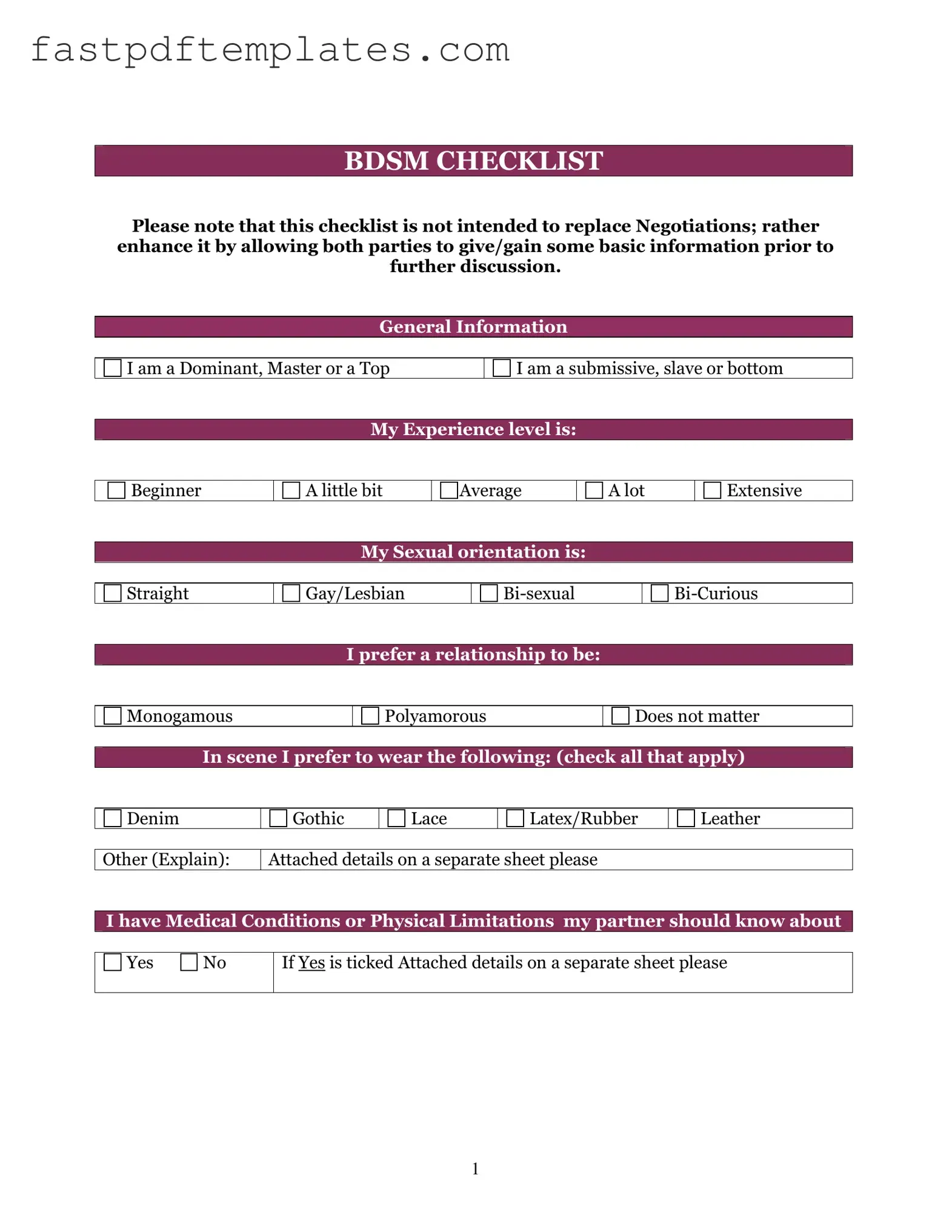The BDSM Checklist form is similar to a consent form used in various therapeutic and medical settings. Both documents aim to ensure that all parties involved understand the activities they are agreeing to. A consent form outlines the procedures, risks, and benefits of a medical treatment, while the BDSM Checklist details the preferences, limits, and safe words for those engaging in BDSM activities. Both documents prioritize clear communication and mutual understanding to foster a safe environment.
Another document comparable to the BDSM Checklist is a safety agreement in recreational activities, such as rock climbing or scuba diving. Safety agreements outline the necessary precautions, equipment, and emergency procedures to follow. Similarly, the BDSM Checklist helps participants identify their boundaries and safety measures, ensuring that everyone involved is aware of potential risks and how to manage them. Both documents serve to protect individuals while promoting informed participation.
The BDSM Checklist also shares similarities with a relationship contract. Relationship contracts often outline expectations, responsibilities, and boundaries between partners. Like the BDSM Checklist, these contracts encourage open dialogue about desires and limits. Both documents help to establish a framework for the relationship, ensuring that all parties are on the same page and fostering trust and respect.
Lastly, the BDSM Checklist is akin to a risk assessment form used in various workplaces. Risk assessment forms identify potential hazards and outline measures to mitigate those risks. In a similar way, the BDSM Checklist allows participants to recognize their limits and the risks involved in their activities. Both documents emphasize the importance of awareness and preparation to ensure safety and well-being.






